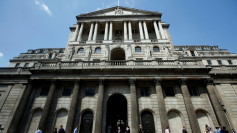The U.S. labor market showed mixed signals last week, with new applications for unemployment benefits holding steady while continuing claims rose to their highest level in three years. According to data released by the Labor Department on Thursday, the number of Americans filing initial jobless claims totaled 219,000 for the week ending December 21, a slight decrease of 1,000 from the previous week. This figure came in below the 223,000 forecast by economists, underscoring the labor market's resilience despite ongoing economic uncertainties.
In contrast, continuing claims, which track the total number of individuals receiving unemployment benefits, climbed to 1.91 million for the week ending December 14. This represents an increase of 46,000 from the prior week and marks the highest level recorded since November 2021, a period when the labor market was recovering from the economic shock of the COVID-19 pandemic. The rise in continuing claims has raised concerns that workers may be finding it more challenging to secure new jobs after losing their positions, potentially signaling a softening in labor demand.
The broader labor market has continued to demonstrate strength despite some signs of moderation. Job openings rebounded in October to 7.7 million, up from a three-and-a-half-year low of 7.4 million in September, according to the Bureau of Labor Statistics. This suggests that businesses remain eager to hire, even as economic pressures persist. Additionally, November saw the addition of 227,000 jobs, a sharp improvement from October's subdued growth of 36,000, which was impacted by labor strikes and weather disruptions. Revisions to earlier months added another 56,000 jobs, further emphasizing the labor market's resilience.
The Federal Reserve's monetary policies have been a critical factor influencing labor market dynamics. Over the past two years, the central bank has raised interest rates to combat inflation, which reached its highest levels in decades during the post-pandemic recovery. While these rate hikes have increased borrowing costs and slowed certain sectors of the economy, the job market has proven more robust than many had anticipated. Last week, the Fed lowered its benchmark interest rate for the third consecutive time, citing signs of cooling inflation. However, inflation remains above the central bank's target of 2%, prompting a cautious approach to future rate adjustments.
Despite the relatively strong labor market, the increase in continuing claims suggests that some workers are experiencing greater difficulty re-entering the workforce. This could indicate that certain sectors are scaling back hiring or that broader economic conditions are beginning to weigh on employment opportunities. While weekly jobless claims remain low by historical standards, the rise in continuing claims highlights potential vulnerabilities in the labor market.
Looking ahead, the government's December jobs report, scheduled for release on January 10, is expected to provide further clarity on employment trends and the overall health of the labor market. Economists and policymakers will closely monitor these figures to assess the impact of the Federal Reserve's policies and the broader economic trajectory.






